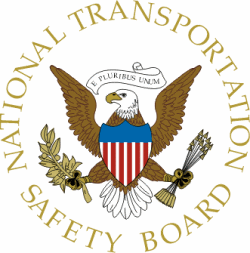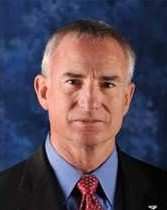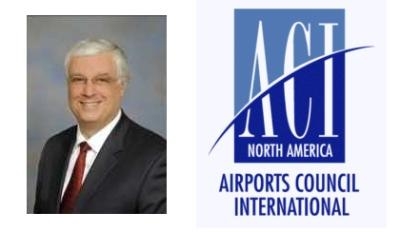Airports Council Welcomes Infrastructure Investment Recommendation
In a statement released shortly after the NTSB's "Most Wanted List" was made public, the Air Line Pilots Association, International (ALPA) expressed qualified support for the list, but the union said that with cargo pilots due to receive a lower level of protection from aircrew fatigue than their passenger counterparts, ongoing concerns about pilot fatigue remain. The list, announced Wednesday by the NTSB, included the prevention of inflight fires and illustrates that concerns about pilot and controller professionalism have been effectively addressed.

Although the NTSB dropped transportation worker fatigue after the FAA published new flight-time and duty-time rules for passenger pilots in December of 2011, Chairman Deborah Hersman made it clear that pilot fatigue—and, in particular, the exclusion of pilots who fly for all-cargo airlines from the recently adopted science-based flight and duty regulations—must continue to be addressed.
“We remain adamant that the new, science-based federal aviation regulations on pilot fatigue must be expanded to cover pilots of all-cargo aircraft,” said Capt. Lee Moak, ALPA president. “ALPA looks forward to maintaining our long-standing partnership with the NTSB in reviewing industry progress toward a true single level of safety for all pilots of all airliners.
“It has been demonstrated that many in Congress share our concerns in this area. The bipartisan Safe Skies Act would provide a legislative solution to the cargo carveout by requiring the Department of Transportation to include cargo operations in the new regulations. ALPA worked hard with our partners on the Hill to get this bill introduced in Congress, and we will continue to aggressively lobby for its passage.”
The NTSB’s new list includes the prevention of inflight fires—something that pilots must be prepared to face each flight. The industry has made significant progress in addressing many aspects of this issue, but the NTSB’s inclusion may help push this work forward.
ALPA also hailed the NTSB’s recognition of extensive industry efforts, supported and led by ALPA and the National Air Traffic Controllers Association, to ensure that the highest standards of professionalism continue to be maintained. The removal of this reference to pilot and controller professionalism is a testament to the hard work of many in the aviation industry and the role of professional standards programs.

“This most wanted list reflects the dynamic nature of risk analysis and mitigation in our industry, and ALPA is committed, as it has been throughout its history, to a safer industry,” continued Capt. Moak (pictured). “We recognize and applaud the work of the NTSB in creating priorities for improving the safety and security of our skies. However, we continue to strongly believe that pilots flying in the same skies, in and out of the same airports, must be flying under the same standards of safety—regardless of what’s in the back of the aircraft. We simply must continue this effort to truly achieve One Level of Safety.“
“We applaud the NTSB’s efforts to increase awareness of critical investments needed to preserve the integrity of transportation infrastructure in order to ensure the safety of passengers and employees,” said Airports Council International-North America (ACI-NA) President Greg Principato. “Making prudent investments in airport infrastructure, including runways, taxiways and terminals, is essential to meeting today’s needs as well as future growth.”
Principato (pictured, below) continued, “I am also pleased with the NTSB’s focus on improving the safety of airport surface operations. As the NTSB appropriately notes, improving surface operations safety ‘requires all parties involved in airport operations to work together to create a safer, more vigilant environment’. We continue to work with our members on this important issue. We also actively participate with FAA’s Office of Airports, Office of Aviation Safety, Air Traffic Organization, airlines, pilots and general aviation in the Runway Safety Council, working collaboratively to enhance the safety of their airfield operations. ”

 Senator Pushes FAA to Accelerate Rocket Launch Licensing
Senator Pushes FAA to Accelerate Rocket Launch Licensing Classic Aero-TV: RJ Gritter - Part of Aviations Bright New Future
Classic Aero-TV: RJ Gritter - Part of Aviations Bright New Future Aero-FAQ: Dave Juwel's Aviation Marketing Stories -- ITBOA BNITBOB
Aero-FAQ: Dave Juwel's Aviation Marketing Stories -- ITBOA BNITBOB ANN's Daily Aero-Linx (10.27.24)
ANN's Daily Aero-Linx (10.27.24) ANN's Daily Aero-Term (10.27.24): Clearance Void If Not Off By (Time)
ANN's Daily Aero-Term (10.27.24): Clearance Void If Not Off By (Time)





